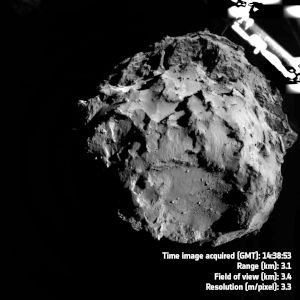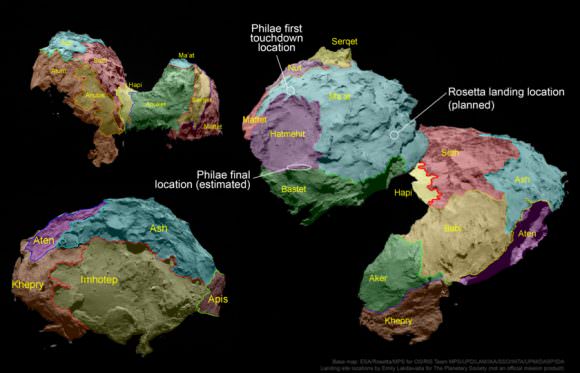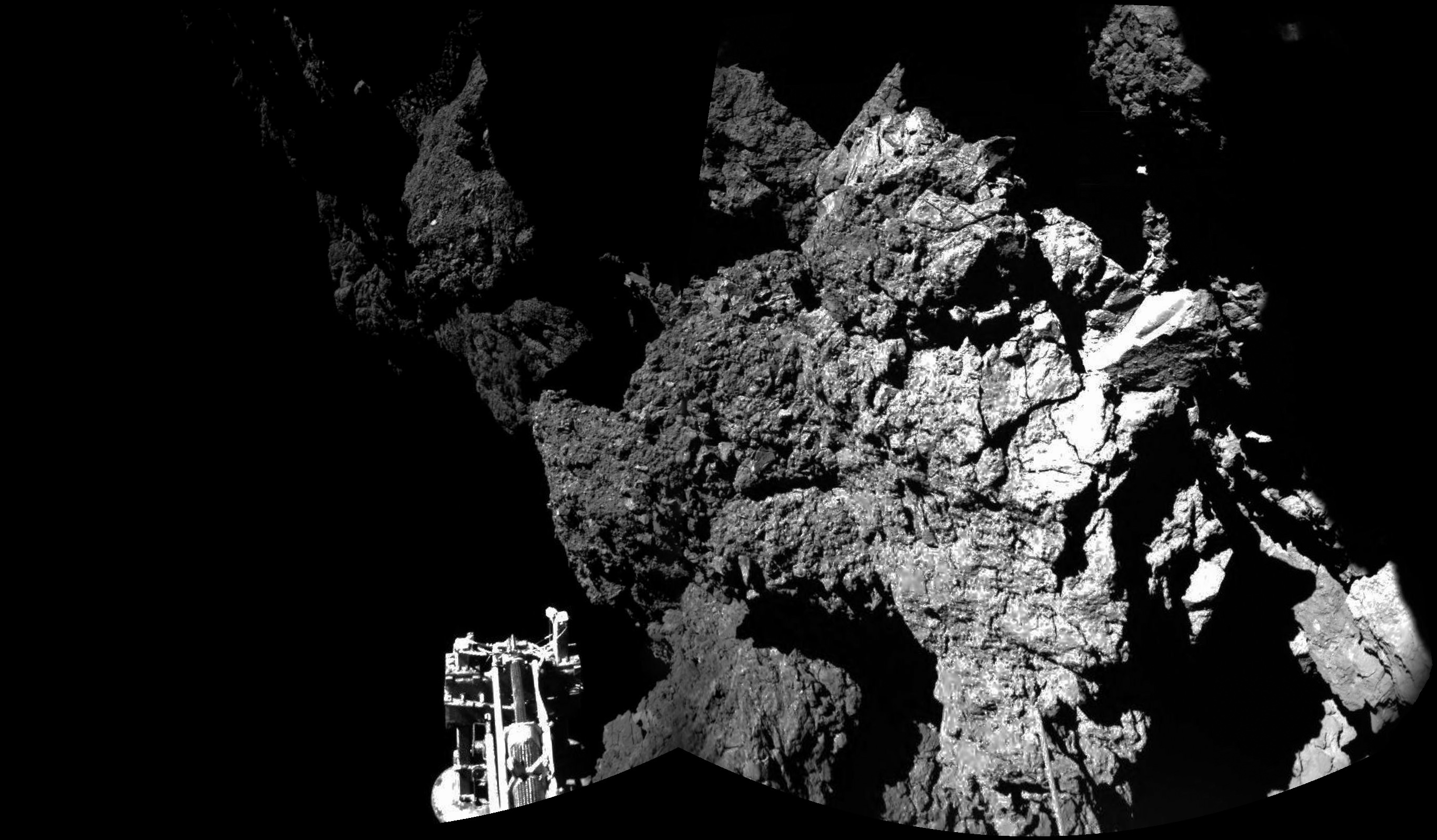You can’t say they didn’t try, but the news is sad nonetheless. ESA announced the mission for the Philae lander – the first spacecraft to ever land on a comet — is officially over. The system that enables communications between the Rosetta spacecraft and Philae – which sitting in a shaded region on Comet 67P/Churyumov-Gerasimenko – is being switched off on July 27, 2016, at 09:00 UTC.
“It’s time for me to say goodbye,” Philae tweeted on Tuesday. “Tomorrow, the unit on @ESA_Rosetta for communication with me will be switched off forever…”
Philae has mostly been in hibernation after its dramatic touchdown (actually, three or maybe four touchdowns) on Nov. 12, 2014 when it separated from the orbiting Rosetta spacecraft, flew, landed, bounced and then repeated that process for more than two hours across the surface. The harpoons that were to anchor Philae to the surface failed to fire, and scientists estimated the lander may have bounced as high as 3.2 kilometers (2 miles) before becoming wedged in the shadows of a cliff on the odd-shaped comet. The solar-powered lander quickly ran out of power, just hours after landing. Philae’s final location has been plotted but never actually seen by Rosetta.

Credits: ESA/Rosetta/Philae/ROLIS/DLR
After months of silence, the team heard briefly from Philae on June 13, 2015, when it transmitted information on its power and computer subsystems. It then made seven intermittent contacts with Rosetta in the following weeks, with the last coming on July 9, but the communications were too short and unstable to transmit or receive any meaningful scientific or engineering data.
Since then, the Support System Processor Unit (ESS) on Rosetta was kept on in the unlikely chance that Philae would wake up and try to reestablish contact. The hope was that when the comet was closer to the Sun, it might receive enough light to power up.
But the reason for turning it off now is due to Rosetta’s own impending end of mission, coming on September 30, 2016 when it will make a controlled impact at the Ma’at region on the comet’s “head.” Emily Lakdawalla of The Planetary Society put together this annotated image of sites where Philae touched down and likely landed, and where Rosetta will end up:

Base map: ESA / Rosetta / MPS for OSIRIS Team MPS / UPD / LAM / IAA / SSO / INTA / UPM / DASP / IDA. Landing site locations: Emily Lakdawalla.
The team decided to keep “Rosetta’s listening channel on until it is no longer possible due to power constraints as we move ever further from the Sun towards the end of the mission,” said Patrick Martin, ESA’s Rosetta mission manager.
Martin said that by the end of this week, the spacecraft will be about 520 million km from the Sun, and will start facing a significant loss of power – about 4W per day. In order to continue scientific operations over the next two months and to maximize their return, it became necessary to start reducing the power consumed by the non-essential payload components on board.
But, Martin added that the mission of Philae and Rosetta will always be remembered as an incredible success.
“The combined achievements of Rosetta and Philae, rendezvousing with and landing on a comet, are historic high points in space exploration,” he said.
Philae did achieve 80% of its primary science goals in its short 64-hour active mission, as it took detailed images of the comet from above and on the surface, searched for organic compounds, and profiled the local environment and surface properties of the comet, “providing revolutionary insights into this fascinating world,” ESA said.
Sources: ESA, The Planetary Society, ESA blog


pictures of the surface of the comet were my desktop for quite a few months. still amazing pics!
Well, 80% seems like a moderate/partial success, surely not a huge success. Huge success is the rovers on Mars designed for 3 months lasting 10 years. Huge success is NewHorizon and Cassini.
Yeah, cause landing on a comet is the same task as landing on a planet like Mars or orbiting around Saturn an flybys of moons and planets.
If you can do it on a big pumpkin you can do it on a apple seed., cause all oranges are apples. Not
Counting the failures for Mars mission, I would say that landing on a comet might be easier. Still too many things did not function during that landing. I agree that after such bad landing 80% sounds good, but I would not call it huge success as I already explained why.
Buh-bye Philae, thanks for trying! The Rosetta Mission was a great achievement and an eye opening experience. Now we know that comets can coalesce from multiple objects. WAY COOL SCIENCE,